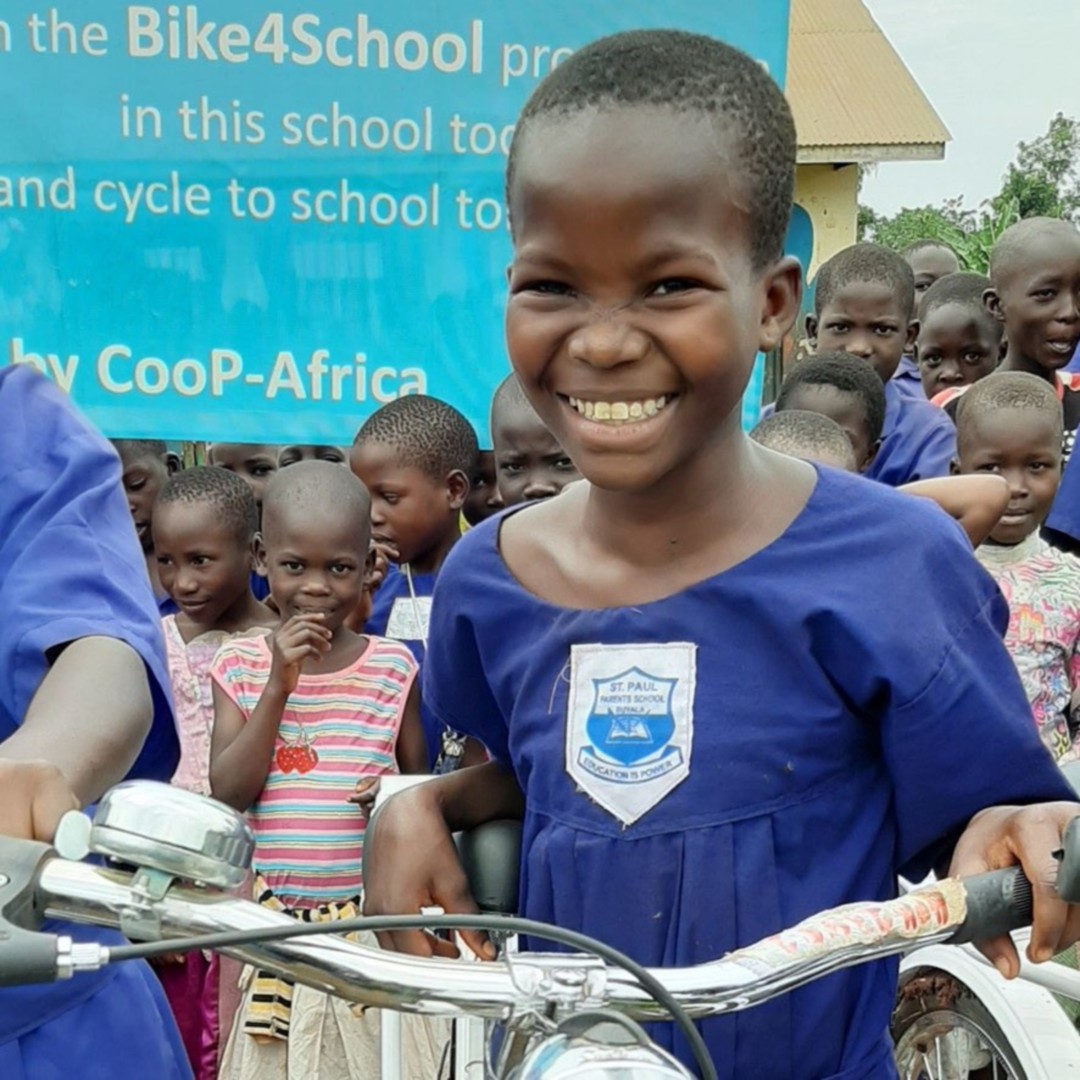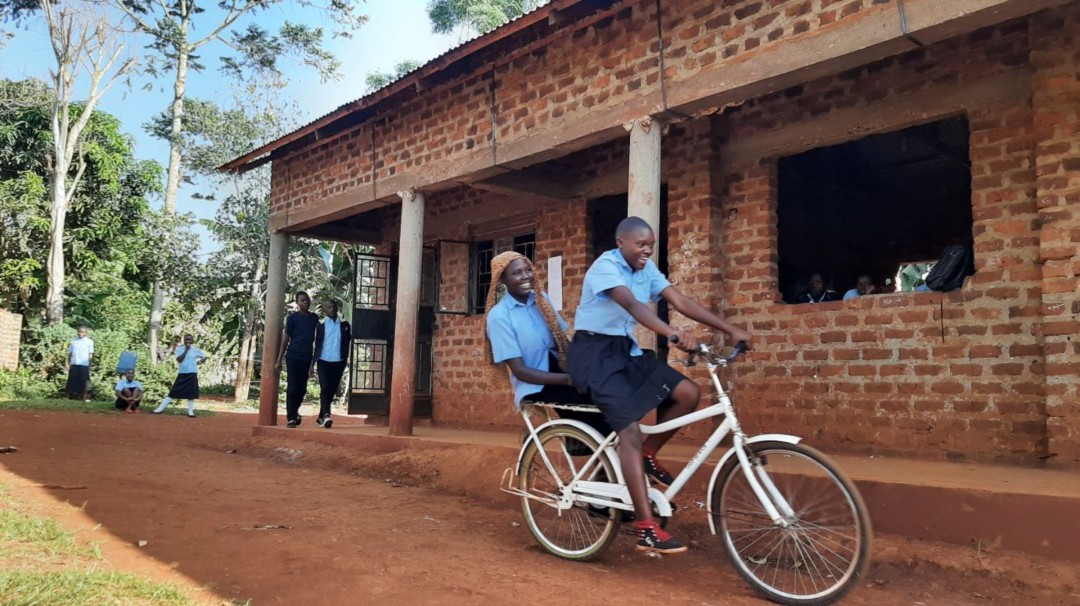Improving access to education, nutrition and agroforestry
More specifically it will Equipping 200 students (of whom 50% are girls) with a bicycle and a solar light. The project aims to establish 5 ‘agroforestry’ school gardens, educate and train 1,500 school children in agroforestry, environment, climate change adaptations, protection of local biodiversity and nutrition. Students will be coached and supported in the maintenance of the ‘agroforestry’ school gardens. Four learning/sharing experience sessions will be organized at each school to ensure the community is educated and 1,000 parents and community members trained in the new practices. At the end of the project CooP-Uganda aims to publish a research and document on the impact of bicycles on girls’ education and empowerment in rural Uganda
Founded in 2009, Cycling out of Poverty Foundation Uganda (CooP-Uganda) is a Ugandan charity. It aims to improve the livelihoods of Ugandan families by making bicycles and other mobility aids accessible and available for everyone in Uganda.
News
Type
Health / Education / Environment / Community DevelopmentDuration
April 2023 – March 2026Location
Jinga / UgandaWith whom
Cycling out of Poverty Foundation Uganda (CooP-Uganda)
Website




See also
Uganda
Population
42.9 million (2017)
Per Capita Income
USD 600/year (2017)
Poverty rate *
21% (2016)
Literacy rate
70% (2016)
Human Development Index
162nd out of 189 countries (2018)
Uganda’s economy has continued to post strong growth, by many developing country standards. It nevertheless remains a very poor country and far from the middle-income status it aspires to. Although the poverty rate has greatly declined from 39% in 2002 to 19% in 2012, the strong population growth has meant that the absolute number of poor people has remained the same. One in three children has no food to eat during the school day and 27% of children under five are stunted. Agriculture accounts for 25% of the country’s GDP and employs 77% of the adult population. However, the productivity of smallholder farmers remains low due to lack of access to services such as credit and insurance and reliance on traditional farming methods.
Sources: World Food Program, UNICEF, World Bank, 2016 Human Development Report, Human Development Indices and Indicators (2018 Statistical Update)
*The percentage of the population living below the national poverty line.